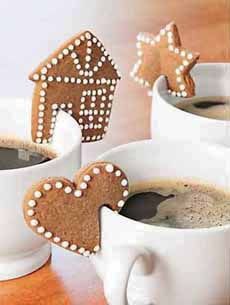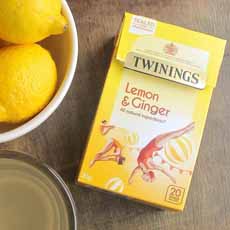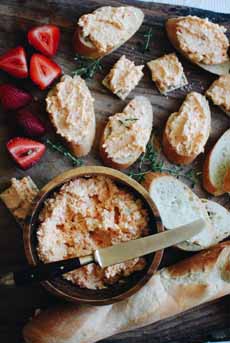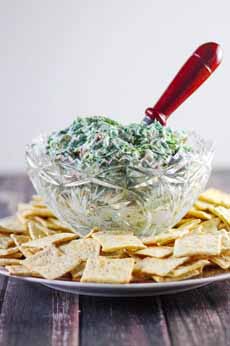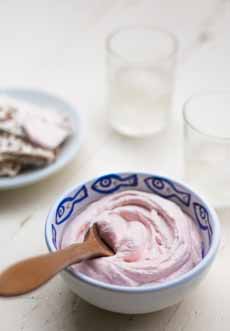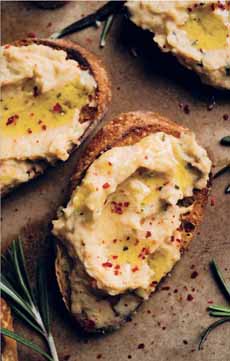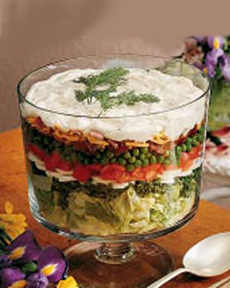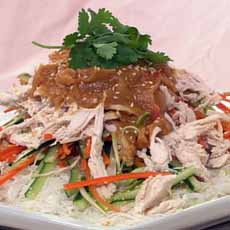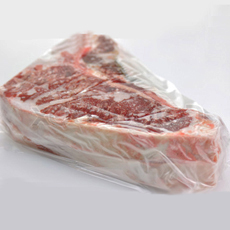
[1] Frozen steak (photo courtesy Mart2Go.com).

Frozen chicken breasts (photo courtesy The Spruce).
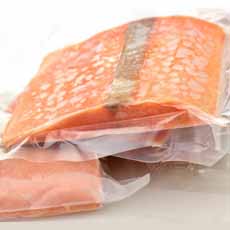
[3] Frozen salmon (photo courtesy Frozen Tuna Fish).
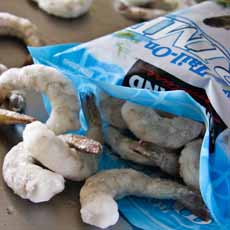
Frozen shrimp (photo courtesy Chef Julie Yoon).
|
|
Going through a pile of articles we tore out to read “later,” we found one that was well worth sharing.
It’s about refreezing thawed foods. What other articles, and mom, told you about it may not be accurate.
Here’s what the Ask Well column in The New York Times has to say about it, starting with the “easily refreezable” foods.
Tina Hanes, a registered dietitian with the U.S. Department of Agriculture’s Food Safety and Inspection Service, confirms:
“You can refreeze anything as long as it’s been handled properly.” It is safe to thaw and then refreeze frozen breads, cakes, fruits, vegetables and processed foods.
Particularly with fruits and vegetables, however, re-freezing and then re-thawing may affect the texture, taste and color. But they’re still safe to eat.
Now for the main course:
REFREEZING THAWED PROTEINS
In general, says Ms. Hanes, the danger of refreezing thawed proteins (meat, poultry, fish, seafood) are myth, with a couple of caveats.
“It’s one of the most popular questions we get on our hotline,” said Ms. Haines. The scoop:
Any raw or cooked food that has been thawed can be refrozen as long as it was thawed properly—in the refrigerator, not on the counter—and hasn’t spoiled.
This includes raw meat, poultry, fish and seafood.
The way to best way defrost a frozen protein is in the fridge, overnight or a day in advance, as required. This is “safe defrosting,” and you can refreeze the protein if you decide not to use it—as long as it’s newly defrosted.
Don’t expect good results if the thawed food is in the fridge for 3 days, it may be spoiled. Spoiled food often smells bad or “off,” and may be sticky or slimy.
The U.S.D.A. food safety site, at FoodSafety.gov, has a chart with recommendations on how long specific foods can be kept in the fridge. For example:
Chicken should be cooked and eaten or refrozen within two days of being thawed in the refrigerator, which takes about one day.
Defrosted fish, shrimp and shellfish should also be cooked and eaten or refrozen within one to two days. The site also offers tips on safe defrosting methods.
Here are defrosting techniques to avoid.
Defrosting: What Not To Do
Don’t thaw at room temperature. You should never thaw frozen meat, poultry, fish or seafood by placing it on the counter at room temperature.
Avoid warm water thawing: Never thaw by running the frozen meat, poultry, fish or seafood under warm tap water. “Bacteria like it warm, and multiply rapidly at room temperature. Thawing on the counter is not safe, period. You should never do that,” warns Hanes.
|
